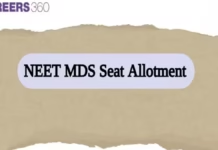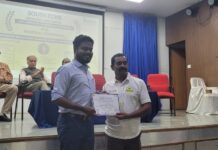Authored By : Mr. Arun Prakash, Founder & CEO of GUVI
In the last two decades, India has witnessed meteoric growth in the Information Technology services sector. The IT industry has become one of the major contributors to the national economy, creating millions of employment opportunities. Latest governmental data suggests that the IT industry employs over 50 lakh professionals around the country, and created more than 60,000 additional jobs in FY 2022-23. With the advent of new-age digital technologies such as Artificial Intelligence (AI) and Machine Learning (ML), the scope of work has increased significantly in the last few years, with a growing emphasis on skilled employees at technology companies. Technological education is no longer limited to only programming skills, the subsequent expansion is highlighting a growing requirement for streamlining the accessibility of tech education in the country.
ALSO READ: AI posing threat to engineering jobs, say experts from MIT World Peace University
However, addressing this challenge requires a comprehensive strategy to enhance the accessibility of tech education across diverse linguistic families. The Eighth Schedule of the Constitution of India consists of 22 official languages, however, the Union Ministry of Education suggests that Indians speak in over 1600 mother tongues. This highlights the importance of making tech education accessible in vernacular languages, 22 of which are spoken by over 96.71% of Indian residents.
Impact of GUVI
The primary objective of GUVI is to address this challenge through strategic technological and manual intervention. The firm offers in-demand technological courses with a special focus on AI, ML, Prompt Engineering, Data Science & Analytics, Programming, Ethical Hacking and many more in 9 Indian vernacular languages. Established as a YouTube channel by Chennai-based entrepreneur Arun Prakash in 2014, GUVI employs over 750 professionals, whose extensive industry experience coupled with linguistic knowledge shapes courses in Tamil, Telugu, Malayalam, Bengali, Hindi and many other vernacular languages. In the last 10 years, GUVI has trained over 3 million learners in diverse courses through vernacular languages with the help of industry professionals and mentors — transforming how tech education is perceived in India.
Top Courses in Data Science Engineering
More Courses With Data Science Certification
Optimizing tech education
GUVI maintains a special emphasis on employing technological tools to transform tech education through the usage of Large Language Models, equipped with vernacular content. The LLMs are coupled with the linguistic expertise of subject-matter experts, whose role is to ensure the global standards in integrating the latest methodologies and pedagogy. This practice is focused on facilitating their students, helping them with the overall learning and comprehension process. According to the company, their innovative balance of human-technological intervention helps 72% of students to complete their respective courses within 3 months, while 78% of learners recollect the concepts faster and 84% of all students have a better comprehension of complex topics than their peers.
The company also highlights the proficiency of learning of their students, who have submitted over 3 Crore lines of codes so far. The success of these students is achieved through the 2,000 educators GUVI employs across India, who have adopted a comprehensive role in creating, translating and reviewing content that is generated through small language models. However, the biggest achievement of GUVI is not limited to its community of students, but helping Indians realise the role of vernacular languages in expressing technological thoughts and the subsequent impact.
Top Courses in Networking
More Courses With Certification
Democratising education through vernacular mediums
Beginning as a YouTube channel that focused on discussing complex tech aspects and relevant education in Tamil — GUVI’s primary goal has been to raise awareness of tech education through vernacular languages. Furthermore, this objective helped the IIT-M-backed company to scale effectively in several other Indian languages. Integrating vernacular mediums helped GUVI to penetrate strategic peri-urban and rural markets where students lack industry exposure and top-of-the-line tech education. Through their innovative programs, the company has been able to establish an interactive relationship with their students, empowering them to become critical contributors to the national economy. Their emphasis on using vernacular mediums to offer tech education also aligns with the National Education Policy (NEP), and the government’s initiatives to promote vernacular languages in Education. This comprehensive strategy has helped the firm to incentivise tech education through vernacular mediums — creating an efficient supply chain of skilled employees in the Indian tech domain.
Future outlook
As the growing emphasis on tech education takes centre stage in India, driven by the country’s bid to house the world’s most innovative technological (IT) industry in the world, the integration of vernacular languages will play a significant role in this aspiration. The edtech market in India has been on the rise in the last few years, with a valuation of $7.5 billion in 2024. The sector is also growing at an unprecedented rate of 25.8% CAGR and is expected to be valued at $29 billion by 2030 when it will have at least 10 Crore paid users. GUVI’s innovative use of vernacular language, in collaboration with IITs and IIMs is paving the road for the future of millions of Indian youth, as it enhances the accessibility of tech education irrespective of linguistic barriers.
This year educate yourself and develop your career with EdTech Platform EasyShiksha.com
















































































